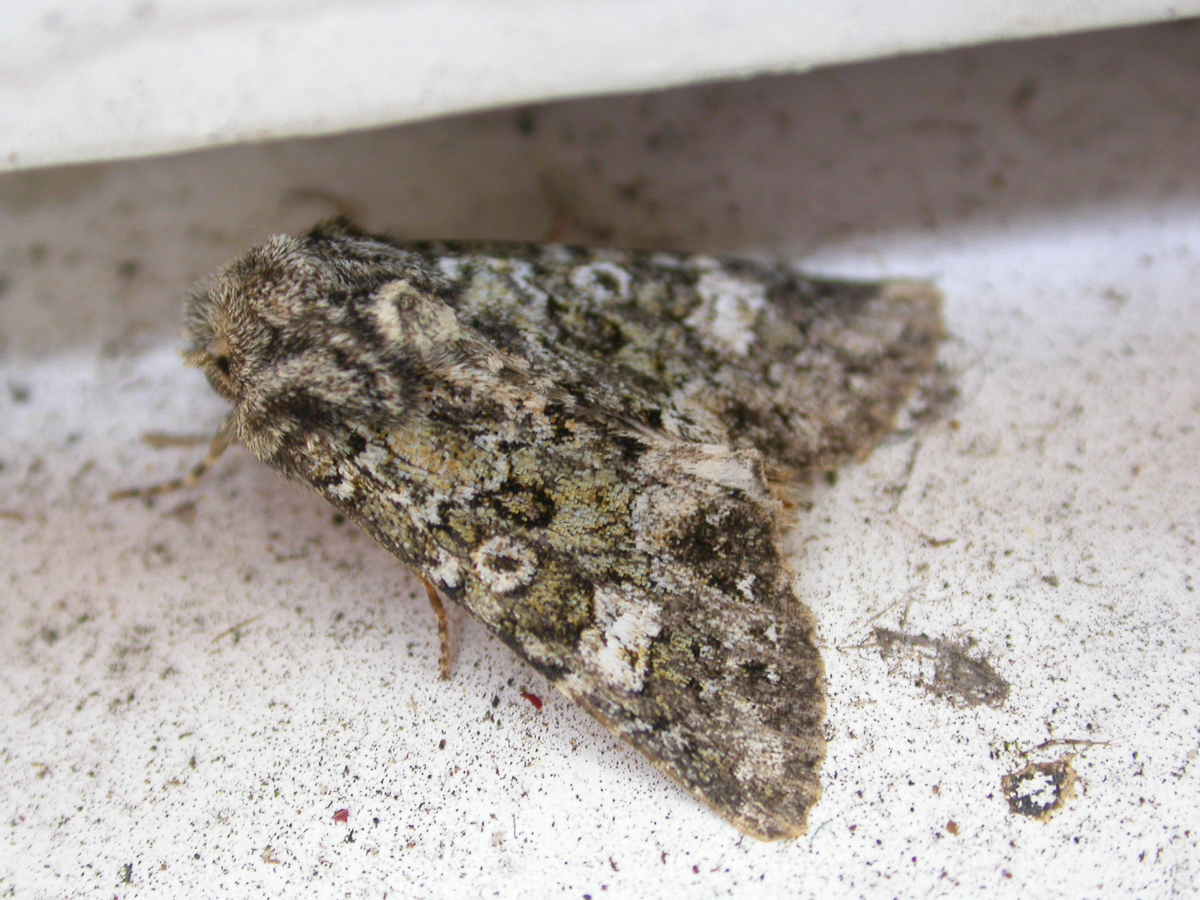
Photo © Andy Mitchell
Polymixis lichenea, the feathered ranunculus, is a moth of the family Noctuidae. It is found in western Europe and Morocco. It is mainly found in coastal areas.
The wingspan is 35-40 mm. Forewing dark to light green, varied with reddish along the inner margin and the course of the lines and round the stigmata; inner and outer lines grey, double; submarginal line pale, preceded by rufous wedge shaped marks; claviform stigma small, dark; orbicular and reniform whitish, often dusted with grey, with dark centres and blackish outlines; fringe green; hindwing of male white, of female light or dark grey, with grey discal spot and outer, sometimes also a submarginal, line; in the form viridicincta Frr. the ground colour is grey tinged with olive, the central fascia generally darker olive, all the red tints replaced by dark green; tephra Geyer is a paler grey form with the green tints also obsolete; aetnea Turati, from Sicily, is blackish, the markings on forewing distinct.
Adults are on wing from August to October.
Larva pale green or brownish mottled with darker; spiracular line pale; head yellowish. The larvae feed on various low-growing plants, including Sedum acre and Armeria maritima.
Source: Wikipedia
The primary larval foodplants are Biting Stonecrop (Sedum acre), Bramble (Rubus fruticosus), dandelions (Taraxacum spp.), docks (Rumex spp.), Foxglove (Digitalis purpurea), Hoary Cress (Lepidium draba), Hound's-tongue (Cynoglossum officinale), plantains (Plantago spp.), ragworts (Jacobaea spp.), Red Valerian (Centranthus ruber), Thrift (Armeria maritima), trefoils (Trifolium spp.) and Wild Cabbage (Brassica oleracea var. oleracea).